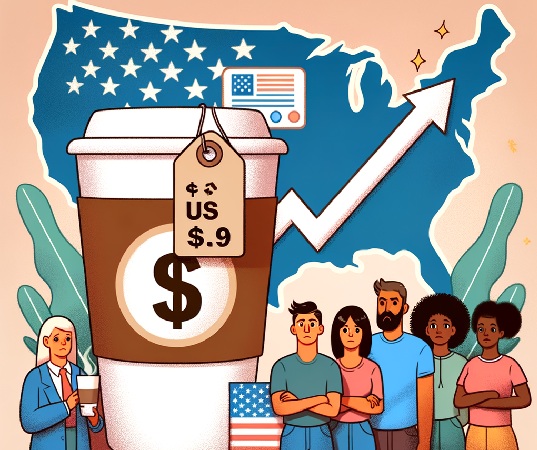As a big coffee drinker, I notice when prices shift—and lately, I’ve been thinking a lot about how trade policy affects my daily brew. A 50% tariff on Brazilian coffee might sound like a blow to unfair competition, but let me tell you: it’s your wallet that ends up paying the price.
And much of that extra cost? It doesn’t stay in the U.S. It leaves.
🇧🇷 Brazil Isn’t Just Another Coffee Country
Brazil is by far the biggest exporter of coffee (see rankings), they supply over 30% of the world’s coffee . That means whether you’re sipping a diner brew or a single-origin espresso, there’s a good chance it includes Brazilian beans.
So when the U.S. hits Brazil with a 50% tariff, importers scramble to buy from other producers—Colombia, Vietnam, Ethiopia—to avoid the added cost.
☕ But Even Non-Brazilian Coffee Gets More Expensive
You might think, “Fine, I’ll just drink Colombian coffee instead.”
But here’s the catch: once Brazil is out of the picture, Colombian producers don’t have to compete as hard on price. They know demand is up in the US market. They raise prices—not because their cost increased, but because they can.
🔁 Same beans. Same cost. Just more expensive now—because your alternatives have thinned out.
🌍 Isn’t Coffee a Global Commodity?
Yes, and that’s a great question. Coffee is traded on global exchanges:
- Arabica on ICE in New York
- Robusta in London
These set a baseline price, but actual sales also include differentials—adjustments for:
- Country of origin
- Quality
- Certifications
- Shipping costs
- Tariffs
- And even the destination market
So while the global price might stay stable, U.S. importers could still pay more—because Colombian exporters can now charge a premium in the U.S. specifically. For a more detailed explanation of coffee pricing see: Coffee Prices Explained: A Beginners Guide to Green Coffee Prices.
💸 Who Gets the Extra Money?
Let’s break it down with a hypothetical example at the green coffee level (what importers pay per pound of unroasted beans):
| Origin | Pre-Tariff Price (Green Coffee) | Post-Tariff Price | Who Gets the Extra? |
|---|---|---|---|
| Brazil | $2.00/lb | $3.00/lb (with 50% tariff) | $1.00 to U.S. government |
| Colombia | $2.00/lb | $2.40/lb (no new tariff) | $0.40 to Colombian exporter |
☕️ Retail coffee prices (what you pay at the store) are usually 4–5× the green coffee cost after roasting, packaging, shipping, and markup.
So if you used to pay $10 for a bag, and now the green coffee cost is up by 20–50%, that bag might cost $11 to $12, even if the beans don’t come from Brazil.
📉 Global Price Flat, U.S. Price Up
Here’s what really stings: global supply and demand haven’t changed.
Colombian exporters may still sell to Europe at $2.00/lb. But in the U.S., they charge $2.40/lb—because Brazil is less competitive here, and they don’t have to match Brazil’s price.
That $0.40 premium?
- Not a tariff
- Not a cost
- Just a side effect of broken competition that increase cot for US consumers and the money leaves the country
📊 Graphic: Where Your Coffee Dollar Goes
A simplified visualization: most of the extra money leaves the U.S., whether it’s paid as tariffs on Brazilian imports or extra profit to non-Brazilian suppliers.
🧠 Final Sip
This isn’t about politics—it’s about prices.
A 50% tariff on Brazilian coffee:
- Raises U.S. retail prices across the board
- Sends some money to the U.S. government
- Sends potentially more to foreign exporters who now face less competition.
So if you notice your usual $12 bag of beans climbing to $14, don’t just blame inflation.
It might be geopolitics—and market distortion—in your cup.


Leave a Reply